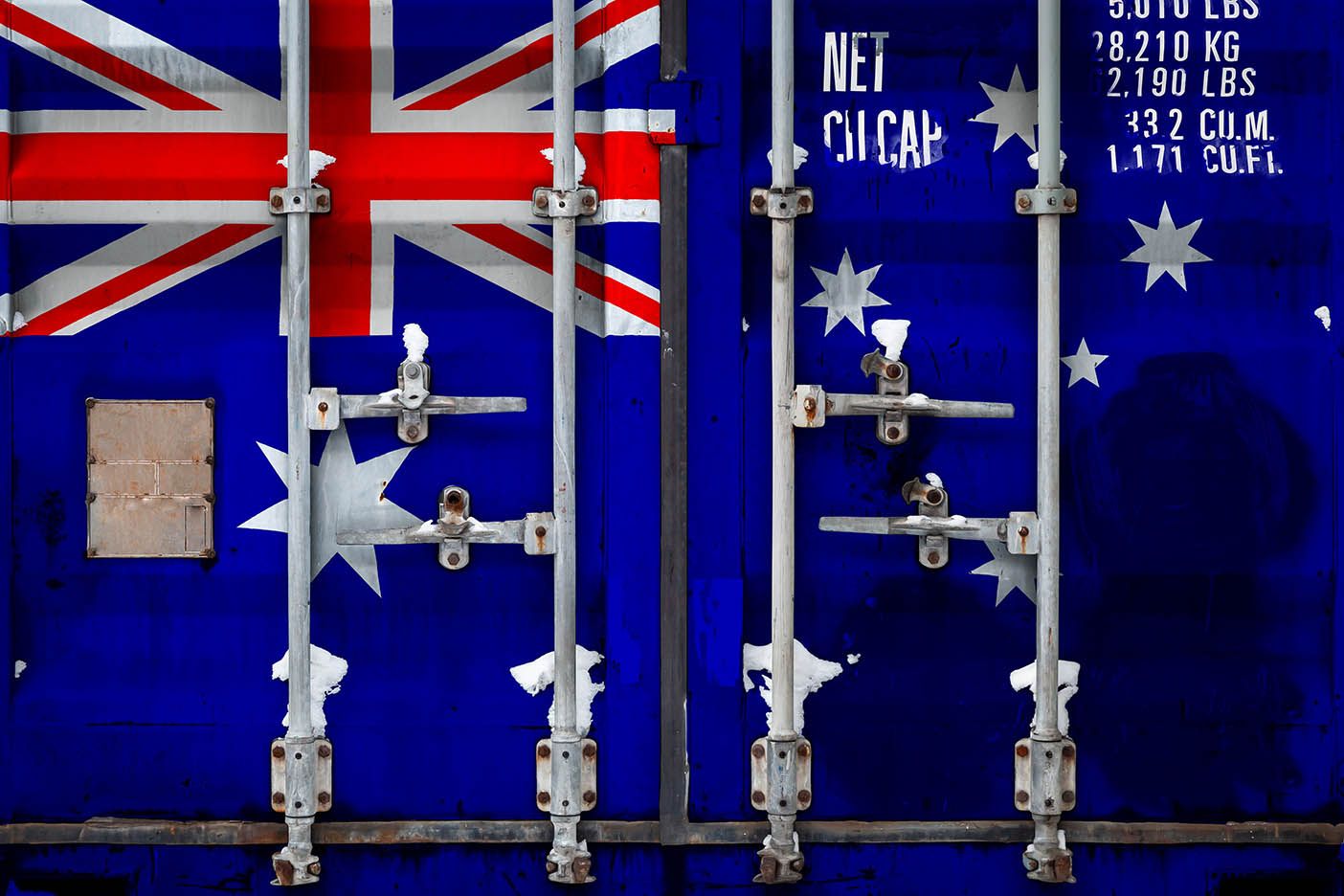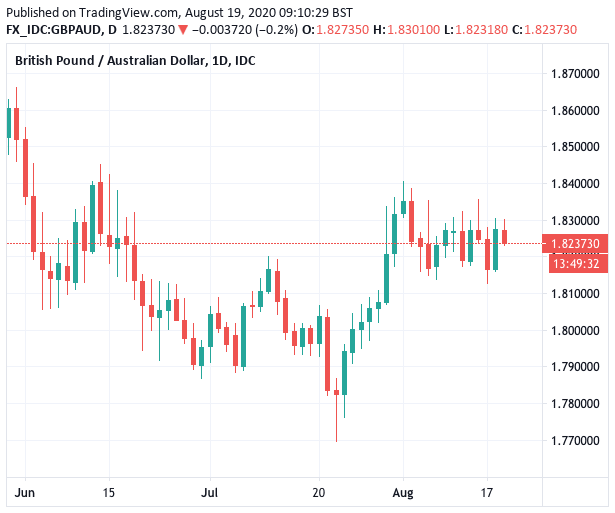CBA see Australian Dollar Supported by Iron Ore Prices
- AUD strengthens on strong commodity dynamics
- But GBP outperformance holds GBP/AUD in place
- We are wary of a turn lower in the pair

Image © Adobe Images
- Pound-to-Australian Dollar rate at time of writing: 1.8238
- Bank transfer rates (indicative guide): 1.7600-1.7727
- FX specialist rates (indicative guide): 1.7806-1.8074
- More information on how you can access bank-beating rates, here
An "unstoppable" rally in commodity prices is likely to keep the Australian Dollar firmly supported against the U.S. Dollar according to a prominent analyst we follow, however a period of outperformance by Sterling is ensuring the GBP/AUD continues to hold the lion's share of its July recovery.
"The recent rally in some commodity prices seems unstoppable," says Joseph Capurso at Commonwealth Bank of Australia. "Commodity prices are an important driver of AUD."
Iron ore market dynamics are particularly supportive given this commodity is Australia's single largest export and foreign exchange earner. "Iron ore prices – Australia’s largest commodity export – rose to six‑year highs. Even stronger demand for iron ore is expected in coming months because of seasonality and pent‑up demand," adds Capurso.
Chinese iron ore imports rose 17% last week driving iron ore prices to US$117.3/t on Tuesday. According to SP Angel - a London based brokerage - iron ore arrivals at Chinese ports rose 2.16mt to 14.81mt compared to the week prior, and 410,000t from the same period last year.
Australia remains the single largest beneficiary of the bullish iron market dynamics as departures from Australian ports rose 1.4mt from the week prior to 16.32mt, whilst shipments from Brazil increased by 370,000t to 7.59mt.
Iron ore remains a key source of valuation for the Australian Dollar says Capurso, "the elevated iron ore prices (amongst other commodity prices) will in turn underpin AUD".
Image courtesy of CBA
"The major driver of higher iron ore prices has been Chinese demand. As part of its fiscal stimulus, China ramped up its funding to commodity‑intensive infrastructure projects. The funds need to be allocated by local governments by the end of October and will therefore support Chinese steel demand in the near term," says Capurso.
CBA's commodity analysts expects strong Chinese demand will likely keep iron ore prices above $US100/t for the remainder of 2020.
The Australian Dollar maintains a strong uptrend against the U.S. Dollar with the AUD/USD exchange rate hitting a fresh two-year high in midweek trade at 0.7266.
"AUD/USD managed to post a new high for the cycle yesterday, but generally low volatility is seeing the weak USD trend proceeding in grinding fashion. The next major chart point for AUDUSD is up at the psychological 0.7500 area, but really the ceiling stretches all the way to 0.8000+. Would expect the RBA to get very uncomfortable and loud well ahead of that level if this move higher continues," says John Hardy, an analyst at Saxo Bank.
However, the rally in AUD/USD is not necessarily translating into a lower GBP/AUD, as would typically be the case, with the exchange rate quoted at 1.8248, following a 0.60% rise recorded on Tuesday.
Sterling is a short-term market outperformer and this strength appears to be holding up pairs like GBP/AUD which would typically be expected to fall in times of stock market and commodity market exuberance. However, we note the pair to be favouring a 1.8130-1.8400 range, which is well above its July lows, that could persist over the coming hours and days.
We note in our main midweek piece that Sterling's outperformance against all its G10 peers over the course of the past month suggest a recalibration by the market which had been selling the currency heavily through the April-June period.
A number of factors are supporting Sterling we argue, including: 1) the market's growing belief that some kind of deal will be reached between the EU and UK by October 2) the domestic economic recovery is starting to outperform 3) the Bank of England has little incentive to slash interest rates into negative territory, particularly given today's hotter-than-expected inflation numbers.
In short, the Pound is holding up GBP/AUD in spite of the Aussie Dollar's strength elsewhere which looks to be well founded. For that reason, we would expect the GBP/AUD to come under pressure should sentiment turn negative against Sterling once more, which is probable given the market's tendency to show nerves whenever Brexit-related negotiations heat up.
The Aussie simply has a strong fundamental underpinning and we would favour it if the current stock market and commodity rally remain in place.
"There’s no stopping the U.S. equity freight train. The S&P 500 erased all its losses since the pandemic rocked global markets to capture new records on Tuesday, pulling off its quickest ever return to new highs after entering a bear market. The primary driver of this rapid recovery is the avalanche of liquidity that’s been unleashed by the Fed and other central banks, which has virtually made bonds uninvestable, forcing investors looking for any returns to rotate into equities," says Marios Hadjikyriacos, Investment Analyst at XM.com.
If you have looming GBP or AUD payments and would like to lock in current rates for budget certainty, or you would like to set an automatic order that is fulfilled when a desired rate is struck, we would suggest looking at the various options that are available to you.












